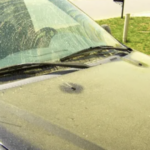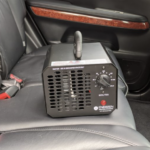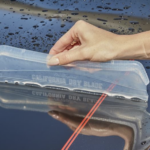How to Properly Clean and Maintain Your Car’s Engine Bay
Why Cleaning Your Engine Bay is Important
Most car owners focus on washing and detailing the exterior, but a clean engine bay is just as important. Over time, dirt, oil, and grime accumulate under the hood, which can lead to overheating, corrosion, and reduced performance.
Cleaning the engine bay helps:
- Improve cooling efficiency by removing debris that blocks airflow.
- Prevent rust and corrosion on metal components.
- Make it easier to spot leaks or worn-out parts.
- Reduce the risk of electrical damage from dirt buildup.
A well-maintained engine bay also adds value when selling a car, showing that the vehicle has been properly cared for.
How Often Should You Clean Your Engine Bay?
The frequency of cleaning depends on driving conditions. Cars used in dusty environments, coastal areas, or heavy traffic should have their engine bay cleaned every three to six months. If you mostly drive in mild conditions, a thorough cleaning twice a year is enough.
Signs that your engine bay needs cleaning:
- Visible dirt and dust buildup on hoses and plastic covers.
- Oil or grease stains on engine components.
- Leaves or debris stuck in crevices, especially near the air intake.
- Unusual odors coming from under the hood.
Regular maintenance keeps dirt from accumulating, making each cleaning session easier.
Tools and Products You’ll Need
Before starting, gather the right tools to ensure a safe and effective cleaning process.
- Microfiber towels – For drying and wiping down surfaces.
- Soft-bristle brushes – Helps loosen dirt without scratching delicate components.
- Degreaser or all-purpose cleaner – Removes oil and grime buildup.
- Plastic bags or foil – Covers sensitive electrical components.
- Garden hose or pressure washer – Used on a low setting for rinsing.
- Compressed air or leaf blower – Speeds up the drying process.
- Rubber gloves – Protects your hands from chemicals.
Avoid using household cleaners, as they can be too harsh on engine components. Automotive-specific degreasers are formulated to break down grease without damaging plastic, rubber, or metal parts.
Step-by-Step Guide to Cleaning an Engine Bay
1. Let the Engine Cool Down
Never clean a hot engine. Spraying cold water on a hot engine can cause components to crack due to rapid temperature changes. Let the car sit for at least 30 to 60 minutes before starting.
2. Cover Sensitive Components
While modern engine bays are designed to withstand some moisture, certain components should be covered to prevent water damage.
- Battery terminals and fuse boxes – Cover with plastic bags or foil.
- Air intake and alternator – Avoid direct contact with water.
- Exposed electrical wiring – Protect to prevent malfunctions.
For extra precaution, some detailers disconnect the battery before cleaning. If you’re unfamiliar with doing so, proceed with care and avoid excessive water near sensitive parts.
3. Remove Loose Debris
Use compressed air, a leaf blower, or a soft brush to remove leaves, dust, and dirt from crevices. Pay close attention to:
- The cowl area near the windshield, where leaves tend to collect.
- Around the radiator and air filters, as dust buildup affects airflow.
- Engine mounts and fluid reservoirs, where grease accumulates.
Removing debris first prevents it from turning into sludge when combined with degreaser and water.
4. Apply Degreaser and Let It Sit
Spray a water-based degreaser evenly across the engine bay, focusing on greasy areas like the valve cover and hoses. Let it sit for 5 to 10 minutes to break down dirt and oil.
If there’s heavy buildup, use a soft-bristle brush or detailing brush to gently agitate the surface. Avoid scrubbing electrical components or delicate parts.
5. Rinse with Low-Pressure Water
Use a gentle stream of water from a garden hose or low-pressure setting on a pressure washer. High-pressure water can force moisture into electrical connections, leading to damage.
Work from top to bottom, allowing water to wash away loosened dirt. Avoid prolonged spraying on electrical areas, even if they are covered.
6. Dry the Engine Bay
Drying the engine bay prevents water spots and corrosion. The fastest methods include:
- Using compressed air or a leaf blower to remove excess moisture.
- Wiping down surfaces with microfiber towels.
- Letting the engine idle for 5 to 10 minutes to evaporate remaining moisture.
Ensuring everything is completely dry before closing the hood prevents trapped moisture from causing problems later.
7. Apply a Dressing to Plastic and Rubber Components
To restore a clean, factory-fresh look, apply a rubber and plastic protectant to hoses, covers, and reservoirs. This helps prevent:
- Drying and cracking from heat exposure.
- Fading due to UV damage.
- Stiffness in rubber seals and belts.
A light, even coat is enough—avoid over-applying, as excess product can attract dust.
Common Mistakes to Avoid
Cleaning an engine bay is simple when done correctly, but mistakes can lead to costly repairs.
Using High-Pressure Water
Pressure washers are great for exterior cleaning, but using too much pressure under the hood can force water into connectors, sensors, and fuse boxes. A garden hose or controlled spray is safer.
Skipping the Drying Process
Leaving moisture in the engine bay increases the risk of corrosion and electrical malfunctions. Always dry components thoroughly before restarting the car.
Using Harsh or Household Cleaners
Degreasers designed for kitchen use can damage rubber seals, hoses, and plastic parts. Always use automotive-specific cleaners to avoid drying out sensitive components.
Not Protecting Electrical Components
Even though many modern vehicles have sealed connections, it’s still best to cover critical electrical parts. Failing to do so could lead to sensor malfunctions or short circuits.
How Engine Bay Cleaning Helps with Maintenance
Keeping the engine bay clean isn’t just about looks—it makes routine maintenance easier and improves the longevity of parts.
- Easier Leak Detection – A clean engine makes it easier to spot oil, coolant, or transmission fluid leaks before they become serious problems.
- Better Cooling Efficiency – Removing dust and grime prevents blockages that affect airflow and overheating.
- Prevents Rust and Corrosion – Keeping metal parts free of debris and moisture extends their lifespan.
For cars frequently driven in dusty areas, near construction zones, or in heavy stop-and-go traffic, cleaning the engine bay regularly reduces wear and tear.
When to Get a Professional Engine Bay Cleaning
If the engine bay is extremely dirty or hasn’t been cleaned in years, professional Orlando mobile detailing services offer deeper cleaning without risk of damage. Professional detailers:
- Use steam cleaning to break down grease without harsh chemicals.
- Apply specialized degreasers that are safe for all components.
- Ensure proper drying and protective coatings are applied.
Getting an engine bay cleaning before selling a vehicle also makes a great impression on buyers, showing that the car has been well-maintained.
Final Thoughts
A clean engine bay keeps a car running efficiently, reduces wear on components, and makes spotting issues easier. By following the right cleaning steps and using safe, automotive-approved products, car owners can maintain their engine’s condition without risk of damage.
Regular maintenance keeps dust, grime, and oil buildup under control, ensuring that the engine bay remains in excellent shape for years to come.
Leave a Comment Cancel Comment
Book Orlando Mobile Detailing
Search
Latest Post
-
 The Cost of Neglect: Why Regular Aircraft Detailing Saves Money in the Long Run
February 14, 2025
The Cost of Neglect: Why Regular Aircraft Detailing Saves Money in the Long Run
February 14, 2025
-
 Why Car Washes Aren’t Enough to Combat Pollen Damage
February 13, 2025
Why Car Washes Aren’t Enough to Combat Pollen Damage
February 13, 2025
-
 Orlando’s Pollen Problem: When Is It the Worst and How It Affects Your Car
February 13, 2025
Orlando’s Pollen Problem: When Is It the Worst and How It Affects Your Car
February 13, 2025
-
 How Ozone Generators Eliminate Stubborn Car Odors in Orlando
February 12, 2025
How Ozone Generators Eliminate Stubborn Car Odors in Orlando
February 12, 2025
-
 Why a Water Blade and Chamois Beat Towels Every Time!
February 9, 2025
Why a Water Blade and Chamois Beat Towels Every Time!
February 9, 2025
